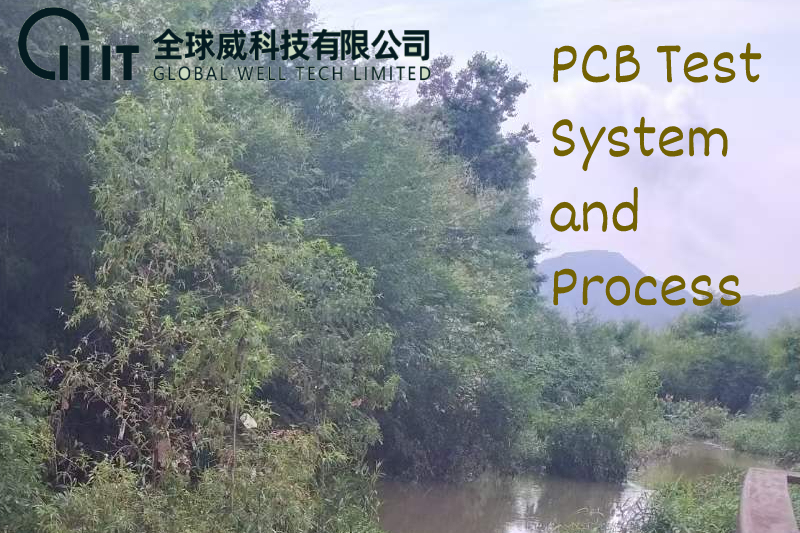PCBA testing
PCB Test System and Process
PCB Test System and Process
Step 1: Testing Before Manufacturing
Incoming material inspection is a crucial step before PCB manufacturing. Its purpose is to ensure that the quality of raw materials meets the required standards and to identify any potential issues before formal production begins. The inspection typically covers various components, such as plates, copper foils, electrolytes, electrolytic baths, chemical reagents, and more. The common methods used in this process include design rule checking (DRC), electrical rule checking (ERC), netlist comparison, as well as electrical and thermal testing.
Step 2: Testing During Manufacturing
This refers to bare board testing. The PCB manufacturing process can be divided into several stages, printing→lamination→drilling→electroplating→solder mask application→surface finish. Different types of tests are performed at each stage to ensure the quality of the PCB:
1.Printing: This involves transferring the circuit layout to the substrate using photolithography. The manufacturer uses an optical inspection system to check for defects or alignment problems.
2.Lamination: This process involves heating and compressing the laminate and the copper layer together by a press machine. A peel strength test is performed to verify the firmness between the laminate and the copper layer.
3.Drilling: This stage involves drilling holes for components and through holes connecting different layers of the PCB. FS Technology performs a drill size verification test to ensure the accuracy of the drill.
4.Electroplating: A thin layer of copper is deposited on the surface of the circuit board and in the holes to form a conductive path connecting different components on the board. Before this process starts, a micro-etching test is required to ensure the adhesion and uniformity of the layer.
5.Solder mask layer: This is the protective layer of copper traces and pads, and an adhesion test is conducted on the application of the solder mask layer to detect its firmness.
6.Surface finish: Customers can choose different PCB surface finishes according to their application requirements. The PCB manufacturer will conduct a solderability test before the process to ensure the quality of the surface finish.
Step 3: Testing Before Assembly
As a professional PCBA company, we understand the importance of ensuring the quality and reliability of our products. Despite carrying out various strict testing procedures during bare board manufacturing, we conduct secondary inspections on all produced PCB boards before PCB assembly to minimize the possibility of rework or scrapped faulty boards. Although this process may slightly affect the processing speed, it is a crucial measure in saving time and money for our customers in the long run.
At GWT, we utilize the latest SMT high-speed placement machine, enabling us to achieve fast turnaround PCB assembly without compromising on quality. We offer a range of testing options, including visual inspection, electrical testing, functional testing, and online testing to ensure the highest level of quality and performance for our customers.
Step 4: Testing during and after PCB Assembly
Assembly involves the process of placing electronic components onto a PCB board, which includes SMT assembly and through hole assembly. With the reduction in PCB board size and the need to accommodate more electronic components in a smaller area on the PCB board, resulting in higher density interconnections, the product quality requirements have significantly increased. GWT takes great care to handle the PCB board during the assembly process and after the PCBA production is completed to avoid damaging the brand image of the client company. The following steps are involved in ensuring the quality of PCBA:
1.SPI inspection: This checks the quality of solder paste printing to avoid problems such as excessive or insufficient solder paste or missing brushes.
2.AOI inspection: This checks for missing, incorrect, or misaligned components throughout each assembly process.
3.In-Circuit Testing (ICT): This checks that components are functioning properly and is usually done using a dedicated test fixture attached to the PCB that tests each component.
4.Functional test: This is a complete test of the entire PCBA to ensure that the expected function can be achieved, including testing the input and output of the device, checking the power consumption of the device, and detecting any functional defects.
5.Visual inspection: This is a manual PCB test performed by well-trained technicians and is the most basic test throughout every process.
6.Automated X-ray Inspection (AXI): This is the process of testing components on a PCB using x-ray inspection equipment to detect problems such as shorts, opens, and incorrect component placement.
7.Burn-in test: This involves running the device under high-stress conditions for a long period of time to ensure its proper functioning and to avoid any potential defects of the PCBA that may occur in the future.
0users like this.



